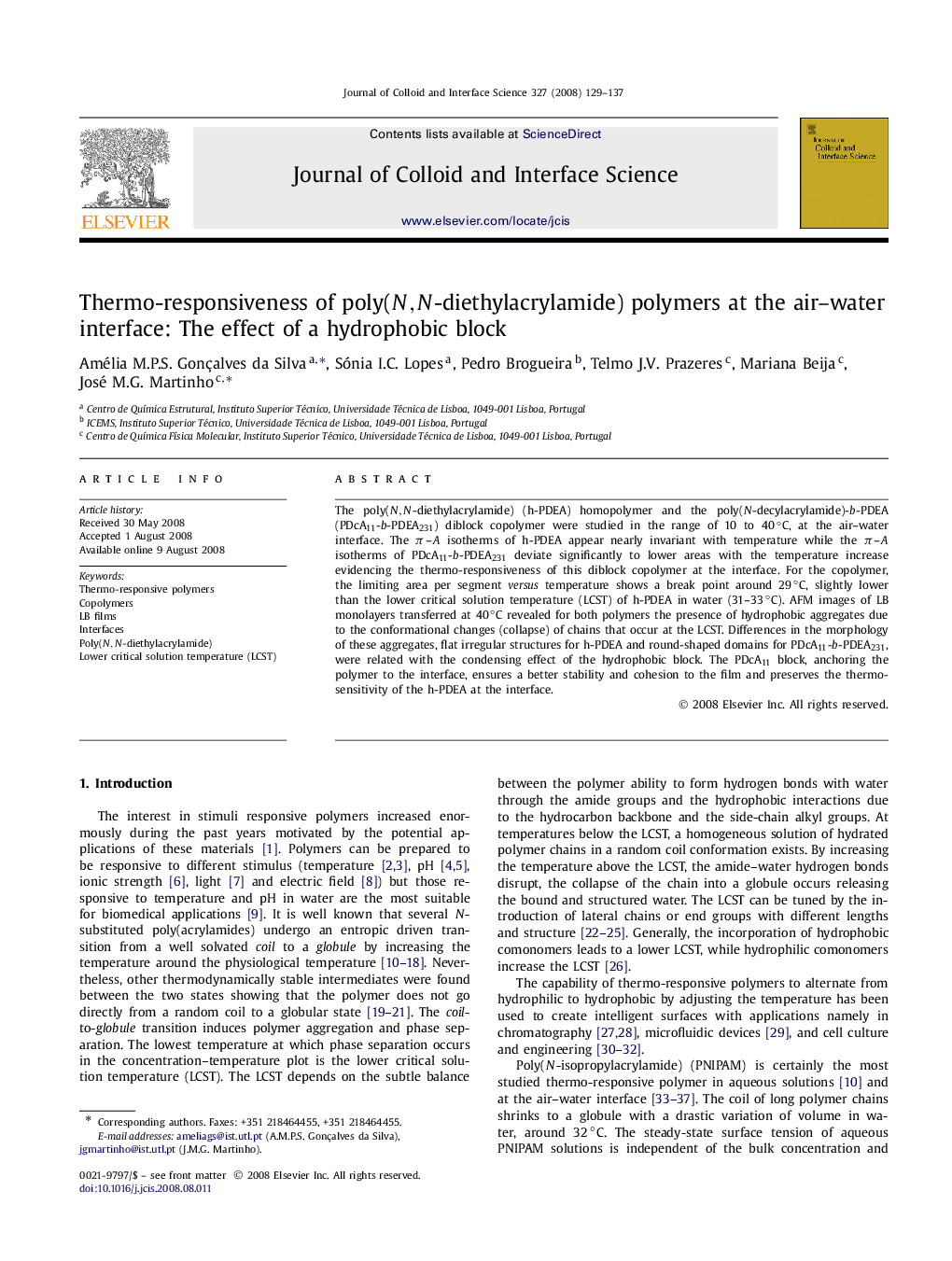| Article ID | Journal | Published Year | Pages | File Type |
|---|---|---|---|---|
| 611298 | Journal of Colloid and Interface Science | 2008 | 9 Pages |
The poly(N,NN,N-diethylacrylamide) (h-PDEA) homopolymer and the poly(N-decylacrylamide)-b-PDEA (PDcA11-b-PDEA231) diblock copolymer were studied in the range of 10 to 40 °C, at the air–water interface. The π–Aπ–A isotherms of h-PDEA appear nearly invariant with temperature while the π–Aπ–A isotherms of PDcA11-b-PDEA231 deviate significantly to lower areas with the temperature increase evidencing the thermo-responsiveness of this diblock copolymer at the interface. For the copolymer, the limiting area per segment versus temperature shows a break point around 29 °C, slightly lower than the lower critical solution temperature (LCST) of h-PDEA in water (31–33 °C). AFM images of LB monolayers transferred at 40 °C revealed for both polymers the presence of hydrophobic aggregates due to the conformational changes (collapse) of chains that occur at the LCST. Differences in the morphology of these aggregates, flat irregular structures for h-PDEA and round-shaped domains for PDcA11-b-PDEA231, were related with the condensing effect of the hydrophobic block. The PDcA11 block, anchoring the polymer to the interface, ensures a better stability and cohesion to the film and preserves the thermo-sensitivity of the h-PDEA at the interface.
Graphical abstractAggregates of variable size were observed at the air–water interface above the LCST of the PDcA11-b-PDEA231 thermo-responsive copolymer.Figure optionsDownload full-size imageDownload as PowerPoint slide
